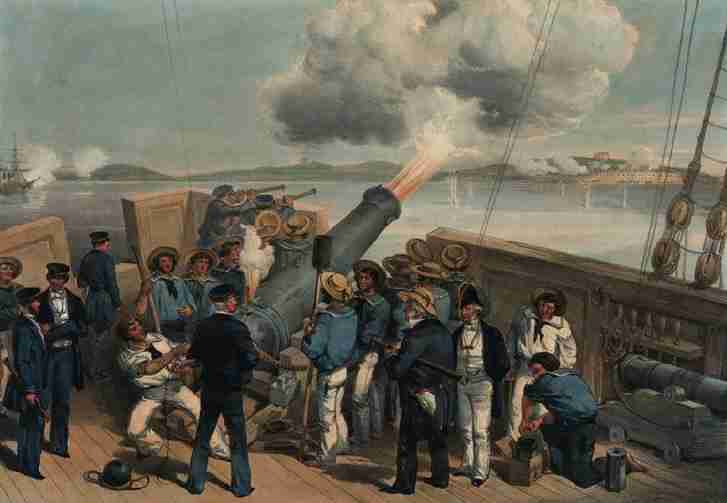|
|||
|
Philatelia.Net / Fragments of Russian History / Plots / The directory «Plots»War on Baltic seaThe Baltic was a forgotten theatre of the war. The popularisation of events elsewhere has overshadowed the significance of this theatre, which was close to the Russian capital. From the beginning, the Baltic campaign turned into a stalemate. The outnumbered Russian Baltic Fleet confined its movements to the areas around fortifications. At the same time, British and French commanders Sir Charles Napier and Parseval-Deschènes – although they led the largest fleet assembled since the Napoleonic Wars – considered Russian coastal fortifications, especially the Kronstadt fortress, too well-defended to engage and limited their actions to blockading Russian trade and conducting raids on less fortified sections of the Finnish coast. Russia was dependent on imports for both the domestic economy and the supply of her military forces and the blockade seriously undermined the Russian economy. Raiding by allied British and French fleets destroyed forts on the Finnish coast including Bomarsund on the Åland Islands and Fort Slava. Other such attacks were not so successful, and the poorly planned attempts to take Hanko, Ekenäs, Kokkola and Turku were repulsed. The burning of tar warehouses and ships in Oulu and Raahe led to international criticism, and in Britain, MP Thomas Gibson demanded in the House of Commons that the First Lord of the Admiralty explain a system which carried on a great war by plundering and destroying the property of defenseless villagers. In the autumn, a squadron of three British warships led by HMS Miranda left the Baltic for the White Sea, where they shelled Kola (which was utterly destroyed) and the Solovki. Their attempt to storm Arkhangelsk proved abortive, as was the siege of Petropavlovsk in Kamchatka. Here, an Anglo-French naval squadron successfully shelled the town but a naval brigade of 800 sailors and marines landed the next day was repulsed. In 1855, the Western Allied Baltic Fleet tried to destroy heavily defended Russian dockyards at Sveaborg outside Helsinki. More than 1,000 enemy guns tested the strength of the fortress for two days. Despite the shelling, the sailors of the 120-gun ship Rossiya, led by Captain Viktor Poplonsky, defended the entrance to the harbor. The Allies fired over twenty thousand shells but were unable to defeat the Russian batteries. A massive new fleet of more than 350 gunboats and mortar vessels was prepared, but before the attack was launched, the war ended. Åland Islands, 2004, Defence of Bomarsund Åland Islands, 2005, A Visit to Bomarsund Åland Islands, 2006, Bomarsund Fortress Jersey, 1985, George Ingouville and Attack on Viborg Jersey, 2006, Ingouville and Lucas Solomon Islands, 2006, Charles Lucas Åland Islands, 2004.06.09, Advertising: |
|||
© 2003-2025 Dmitry Karasyuk. Idea, preparation, drawing up
|

